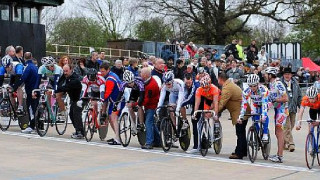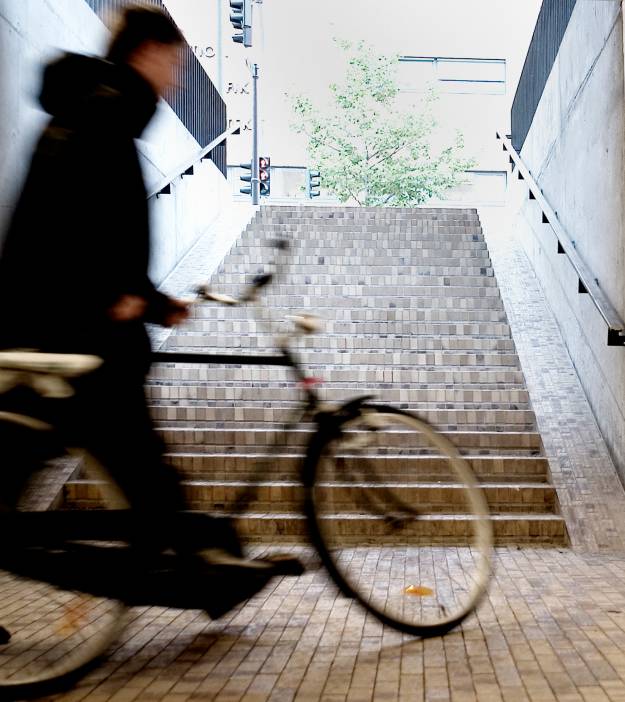Leonard Lyes Remembered as British Cycling Saves the Herne Hill Track
After a number of years of uncertainty, the future of Herne Hill Velodrome looks much more secure after plans for much needed repairs to the dilapidated track were recently approved after a long-term lease was signed with landowners, The Dulwich Estate. With British Cycling as secure tenant and the security of a major sporting body backing the project, The Dulwich Estate has felt confident enough to move from annual lease renewals to a stable 15 year lease specifically for the track.
The problems faced by Herne Hill today centre on the condition of the track, which has been deteriorating for some time. In recent years this has effectively forced racing elsewhere, most notably the historic Good Friday Meeting, which has moved to Manchester, taking away from Herne Hill one of its most distinctive and atmospheric events in the cycling calendar.
Now, with a lease signed, work can begin on rebuilding and refurbishing the facility. The first part of this process is to carry out structural repairs to the track itself. This is being funded by British Cycling's "Whole Sport Plan" through its Sport England investment, and from a financial bequest left to British Cycling for use "in the pursuit of track cycling" by London resident Leonard Lyes, who died in July 2009. A life-long Track cycling supporter, Mr Lyes was a member of De Laune CC, who regularly officiated at Herne Hill track meetings.The British Cycling Board has therefore agreed that this seems particularly fitting that his bequest is to be used for this purpose, and work is expected to start on the track in week commencing 4 July.
British Cycling's National Facilities Manager Dave Cockram and Facilities Officer Patrick Flanagan have been given the task of planning and project managing the repairs to the track.
Patrick outlines the extent of the work required: "The track does need extensive structural repairs. It currently has a concrete base with an epoxy resin finish. This finish has failed and cracked, allowing water to enter the structure and, in conjunction with frost, cause extensive damage, alongside some settling of the concrete base."
"The repairs will start with this concrete base, which will be mended with fibre-glass reinforcement at each joint - it was originally made in 10 metre lengths and where these join, unevenness is now a problem. The repairs will provide a strong and very smooth base upon which the new track surface can be laid."
"The track will then be re-surfaced with a special velodrome-specific covering called ‘MasterTrack', a product we developed in conjunction with Tarmac. MasterTrack contains very fine granite stones and is exceptionally smooth, hard and dense, making it ideal for track racing. It is also impervious to water, so damage from the elements will be eliminated."
"The new surface will be 7 metres wide and laying it presents some challenges: its width, combined with the camber, which changes in the bends, and the need for an extremely smooth finish, make it remarkably difficult to lay. Tarmac has developed a unique rig which runs on a track inside the cycling track: this allows them to lay the surface in three wide strips. So, all in all, it's a pretty special project with some unique problems and equally unique solutions."
In Patrick, a Chartered Building Surveyor and Dave, a Chartered Civil Engineer, British Cycling has two men with the highly specialised skills needed to ensure a challenging project like this is a success. In-house planning and project management has ensured that costs are controlled and that the solution is the correct one for the good of cycle racing at the venue.
Contracts for the work are expected to be signed in the next couple of weeks and with a six week timeframe for the main work to be done, the new track will be ready in late summer 2011.
As well as its super-smooth MasterTrack surface, the Herne Hill Velodrome will also receive a new outer track Safety Fence and a new 3 metre wide Safety Zone run-off area inside the track, which is currently grass.
The campaign to save the Herne Hill Velodrome has involved its resident club, VC Londres as well as a host of other supporters, including 2012 Olympics figure-head Seb Coe and the Architect Mike Taylor, who designed the 2012 Olympic Velodrome and lives close to the Herne Hill site.
With the 2012 Olympics just around the corner, it's especially significant that the Herne Hill Track, originally built in 1892 and the last surviving structure from the 1948 Olympics, is about to receive a new lease of life. Much of the focus on the impressive 2012 facilities has been on their long-term "legacy" value. But how many of them will be looking forward to a new lease of life over 60 years after they are constructed? Indeed, with the life-span of the new track surface expected to be at least 25 years, the benefits for both elite riders and the wider community is secured for another generation.
Ian Drake, CEO of British Cycling, said: "It is excellent news that this important and historic facility has been saved. We are very grateful for the support of John Major of The Dulwich Estate, who has been very helpful in formulating this way forward for Herne Hill. We hope that the restoration of the track will provide the Save the Velodrome Campaign with the momentum to complete the wider project of restoring the whole facility."
Once work has begun, the Velodrome re-build should cause only minimal disruption in the local area. Although there will be short periods of setting up and taking down heavy equipment at either end of the project, traffic bringing materials to the site should not amount to more than a very few lorries a day, as the project does not involve huge amounts of new materials.













